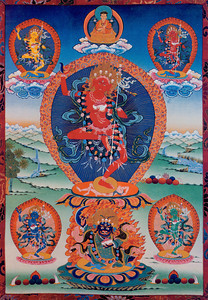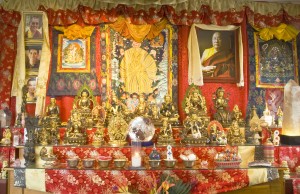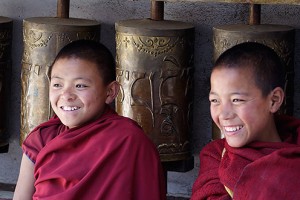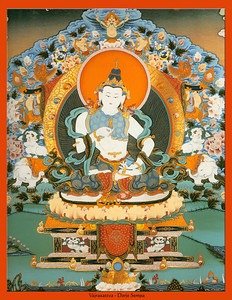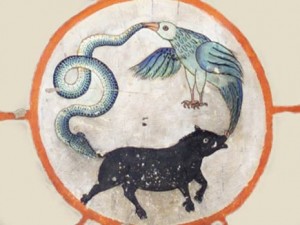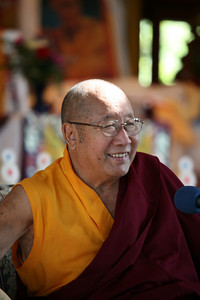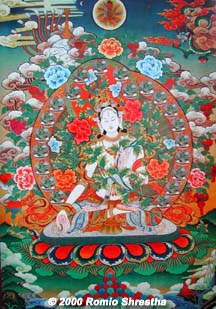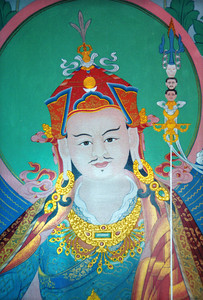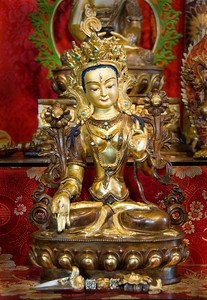From The Spiritual Path: A Compilation of Teachings by Jetsunma Ahkon Lhamo
How do phenomena express themselves as they do? Each sentient being, within its own nature and even within the form in which it arises, contains an essential seed or drop that is the nature of mind itself. Just as all things emanate from Nature and can be understood as the spontaneous arising of that Nature—all phenomena that you as an individual perceive, including your individuality, can be considered the emanation or activity arising from that same mind-drop or essential seed.
Correct view describes that natural drop as being neither small nor big but both and neither. Since this Nature is indivisible, the only difference must be in perception. Literally everything you see is a reflection of your karma as it formulates itself into the perceptions of the five senses. The more you try to contrive understanding with the five senses, the more you try to “nail down” your perceptions, the more confused your perception will be. Data that are based on a system of logic organized by the five senses—cannot give you true wisdom of the realization of the uncontrived Nature.
Since the five senses will always support the ego, they can be considered demonic in their influence. In their enlightened state, however, they can be considered the five celestial wisdoms: they are the components of the activities and qualities of the Buddha Nature itself. They are the five underlying blissful expanses, completely one with emptiness. They are the celestial opportunities, the celestial messengers by which miraculous activity can enter into the world of samsara in order to benefit beings. They are five goddesses or dakinis even though, used as they are, they are five whores.
Within each of us is blissful mind expanse. All spontaneous activity occurs directly and inseparably from that expanse. The dakinis are depicted as distributors, upholders of the fruit of one’s karma. Does this mean that there are dakinis who are separate from you, who are doing something to you? No. It is through the perceptions of the five senses in their unenlightened state that one’s punishments are meted out. There is no one outside of you who causes your suffering.
Karma is completely implemented through the perceptions of the five senses, which survive in some form from life to life. Even though your nose, ears, and brain are gone, the underlying karmic pattern remains to reactivate itself in other incarnations. However, you now feel a totally self-contained involvement with everything you experience. You honestly feel that you suffer because you are too tired, because you have insufficient food or money, because your body hurts. The five senses create these incorrect perceptions.
“How,” you may ask, “can I free myself of these demons, these witches who cause me suffering?” You must want to be free. Unfortunately, you do not. Oh yes, all sentient beings want to be happy, and you are trying to be happy. But you compulsively believe that you can be happy by resolving the scenarios presented by these five senses. These scenarios are not measured and apportioned. Their essential form is not something that can be balanced. The only recourse is to strive to perceive True Nature, renounce the affliction of these five witches, and take refuge in the five celestial wisdoms and the five-natured blissful expanse of emptiness.
© Jetsunma Ahkön Lhamo
